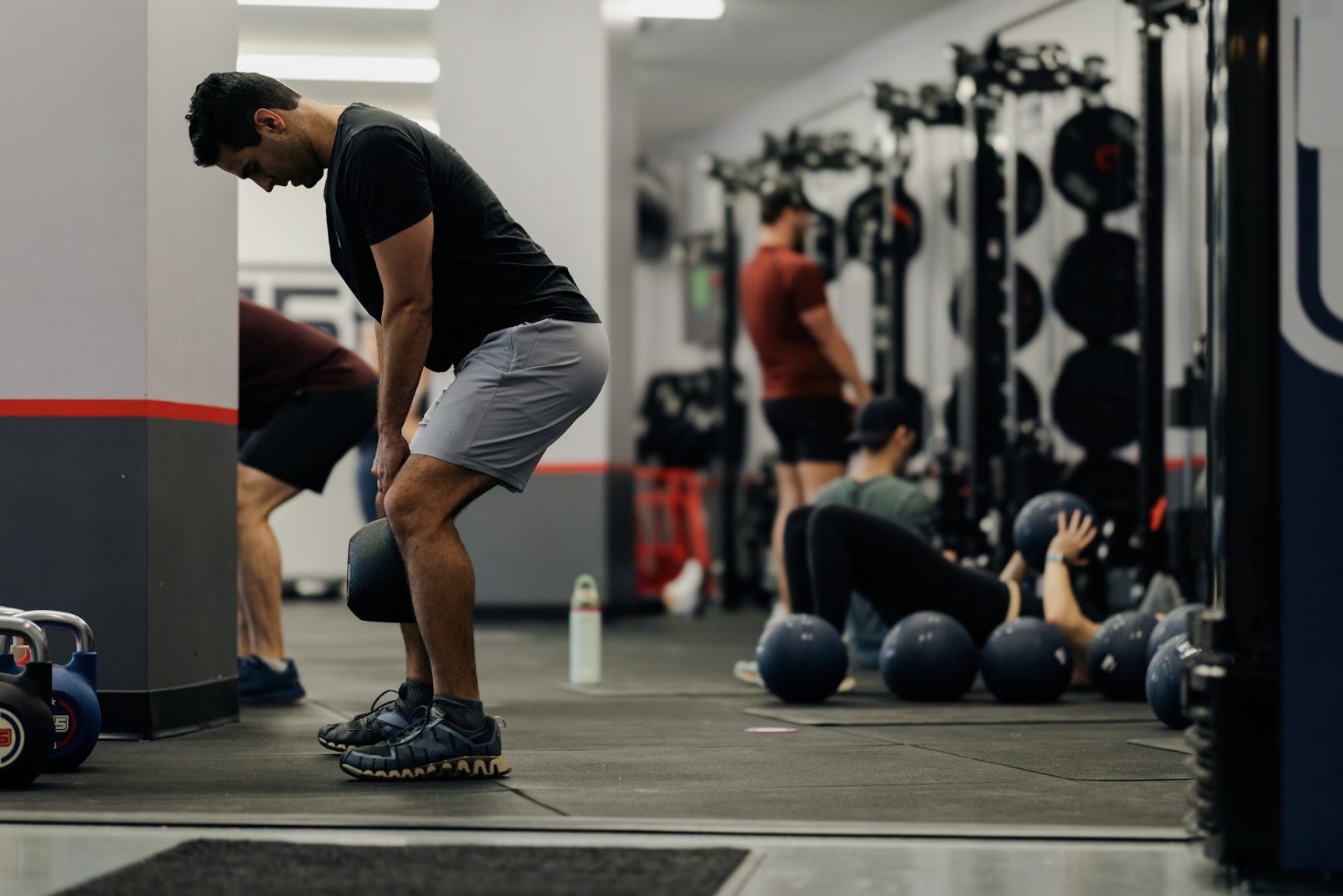To keep growing stronger, fitter and faster, your training needs to continually evolve – and this is where progressive overload comes in.
Progressive overload training is about making small, empowering changes that elevate your training while preventing injury: pushing your body to adapt with every workout.
To help you progress in your F45 workouts and build momentum, we’re explaining what progressive overload is – and how to apply it to different training methods – below.

What does progressive overload mean?
Progressive overload is the idea of steadily increasing the challenge in your workouts, so your body keeps adapting and improving.
This could mean lifting a little more weight, adding a few extra reps, or raising the intensity. Each small step pushes your muscles and fitness a bit further, helping you break through plateaus and continue making progress.
5 ways to apply progressive overload in your workouts
Progressive overload training is about making each workout count by building on it in smart, manageable steps. By gradually increasing the difficulty – whether through isometric exercises, running endurance, or other training styles – you give your body the push it needs to keep improving.
Up next? Five effective ways to apply progressive overload to your fitness regime.
1. Add more resistance
One of the simplest ways to challenge your muscles is by increasing the load. That could mean reaching for heavier dumbbells, kettlebells, or weight plates – or swapping to a thicker resistance band. The added demand pushes your muscles to adapt, leading to steady gains in strength and performance.
2. Increase workout length
Another way to apply progressive overload is by extending the duration of your training. Adding extra time to your workout might mean more reps, more sets, or simply staying active for longer.
This added volume pushes both your muscles and cardiovascular system to work harder, helping you build greater muscle endurance.
3. Elevate the intensity
Boosting the intensity of your workouts is another powerful way to elevate a progressive workout program. That could mean moving faster, pushing harder, or performing each exercise with greater focus and energy. For example, you might sprint instead of jog during a cardio session, or add explosive movements like box jumps, push-ups, or burpees to your routine.
4. Do more reps
Increasing the number of reps you perform is a simple yet effective way to make your training more challenging.
By adding extra repetitions in a resistance or HIIT workout, you increase the time your muscles spend under tension, which helps build both strength and endurance1. Whether it’s squats, lunges, or kettlebell swings, pushing out a few more reps each session keeps your body adapting and your results progressing.
5. Reduce the rest period
Cutting down rest time between sets can be a game-changer. Shorter breaks keep your heart rate elevated and increase the total time your muscles – and cardiovascular system – are under tension.
By trimming rest gradually, you push your body to recover faster and perform better, making every second of your workout count.
That said, this doesn’t mean cutting out rest days. Recovery is fundamental to progressive overload training. Taking time off between workout cycles allows your body to reset, repair, and lock in the benefits of your training.
Progressive overload examples by training type
How progressive overload looks for you will depend on the type of training you’re doing and the results you’re aiming for.
Below, you’ll find progressive overload examples across three key F45 workout styles – giving you practical ways to take your next session to the next level.
Cardio
For cardio workouts, progressive overload means challenging your heart and lungs to work a little harder during aerobic exercise.
This could involve running faster, covering more distance, or reducing your rest between sprints. You might also add extra intervals or extend steady-state sessions to steadily build endurance.
Three-week example (increasing running distance):
- Week 1: Run 2km (1.24 miles) at a steady pace
- Week 2: Run 2.2km (1.37 miles) at the same pace
- Week 3: Run 2.5km (1.55 miles) at the same pace
Resistance
In resistance training, progressive overload means lifting more, moving with more control, or increasing your total training volume.
This approach maximizes the benefits of strength training by challenging your muscles to get stronger and adapt to heavier demands over time². You could use dumbbells, kettlebells, barbells, or resistance bands – the goal is simply to apply just enough extra load to keep progressing without sacrificing form.
Three-week example (increasing weight, then volume):
- Week 1: Goblet squat with 12kg for 10 reps
- Week 2: Goblet squat with 14kg for 10 reps
- Week 3: Goblet squat with 14kg for 12 reps
HIIT
For HIIT, progressive overload focuses on pushing harder in short bursts while improving recovery time. You can achieve this by increasing your work intervals, reducing your rest, or incorporating more explosive movements. These small, targeted changes keep your workouts intense and help you build both strength and cardio fitness simultaneously. F45 classes are the key to finding that sweet spot of pushing hard and taking that short built-in break in between sets.
Progressive overload tips
To get the most out of your progressive overload workout program, keep these key tips in mind as you push toward your goals:
- Track your progress: Record your weights, reps, and times. Seeing improvements not only keeps you motivated but also shows when it’s time to level up.
- Remember that progress isn’t linear: Some days will feel stronger than others – and that’s completely normal. Focus on long-term gains rather than every single session.
- Focus on form: Don’t sacrifice technique just to lift heavier or move faster. Proper form protects you from injury – such as back strain and shoulder pain – and helps you build a stronger fitness foundation.
- Stay safe: Progress gradually, listen to your body, and respect rest days. Recovery is where real improvements lock in.
Now you know how to apply progressive overload training in your next session, learn about the difference between hypertrophy and strength training next.
1 https://pmc.ncbi.nlm.nih.gov/articles/PMC9528903/
2 https://pubmed.ncbi.nlm.nih.gov/38286426/














